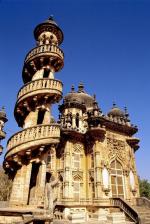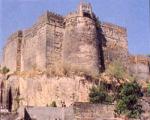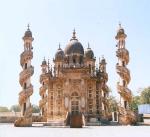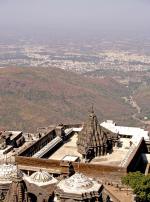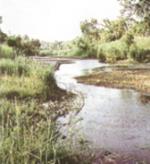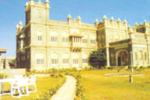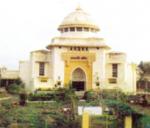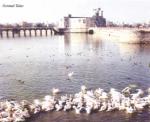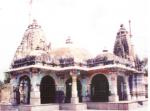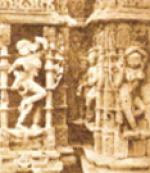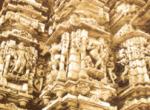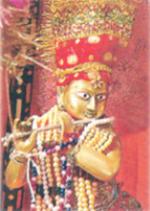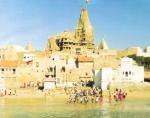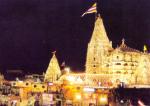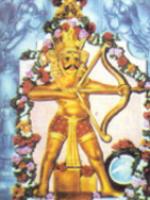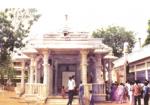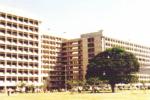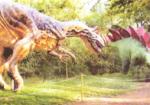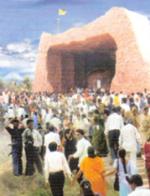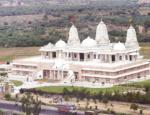AMAZING COLLECTION
 Colourful embroidered wall hangings depicting Krishna legends hang from the second floor right down to ground level. Cloth decorated with tie-dye, glinting mirror work, screen prints, block prints and intricate embroidery include exquisite pieces made for the British and Portuguese and exported to Bali, while from India's royal households there's an embroidered tent and the robes of Shah Jahan, along with elaborate carpets and plump cushions that once furnished Muslim palaces.
Colourful embroidered wall hangings depicting Krishna legends hang from the second floor right down to ground level. Cloth decorated with tie-dye, glinting mirror work, screen prints, block prints and intricate embroidery include exquisite pieces made for the British and Portuguese and exported to Bali, while from India's royal households there's an embroidered tent and the robes of Shah Jahan, along with elaborate carpets and plump cushions that once furnished Muslim palaces.
THE FABULOUS PATOLA
The collection also includes some of the best examples anywhere of the Patola saris woven in Patan as well as the extravagant Zari work that gilds saris in heavy gold stitching and can bring their weight to almost nine kilos.
JAIN SECTION
The Jain section features statues housed in a replica Haveli Temple, along with centuries-old manuscripts and 'mandalas' painted on palm leaves; note the traditional symbols such as the snake and ladder motif representing rebirth and 'karma'.
STATE SPECIALTIES
Among exhibits from else where in India are Kashmiri shawls, Kullu embroidery, glittering silk brocades from Varanasi, folk art from the Punjab and masks and large wooden temple cars (processional vehicles) from Tamil Nadu. Tribal crafts such as Kachchhi silk and cotton 'mashru' weaving are displayed in spectacular wooden 'havelis' from Patna and Siddhpur in northern Gujarat. Clearly labelled models and diagrams explain the weaving, dyeing and embroidery processes.


 Location
Location At a short distance from Bhuj town is the hill fort of Bhujia, the top surrounded by a parapet wall of no great strength, entered by one gate, and enclosing an irregular area with a few scattered buildings. The fort was built by Rao Godji as a sort of out-work defense for Bhuj. It was completed during Maharao Desalji's reign when the hill was crowned with its Snake Temple and was fortified as a further aid to the defense of the capital.
At a short distance from Bhuj town is the hill fort of Bhujia, the top surrounded by a parapet wall of no great strength, entered by one gate, and enclosing an irregular area with a few scattered buildings. The fort was built by Rao Godji as a sort of out-work defense for Bhuj. It was completed during Maharao Desalji's reign when the hill was crowned with its Snake Temple and was fortified as a further aid to the defense of the capital. 
 Location
Location The real attraction here, though, is the Hall of Mirrors, created by the master artisan, Ram Singh Malam, under the patronage of his poet-ruler, Maharao Shri Lakhpatji around the middle of the 18th century. A blend of Indian and European artistry (Ram Singh acquired, his skills in Europe), the walls of the great hall are of white marble covered by mirrors separated by gilded ornaments, lighting being provided by elaborate candelabra, with shades of Venetian glass. It has a platform above it surrounded by a series of fountains operated by an elaborated system of pumps below a Venetian chandelier. Another remarkable feature is the pleasure pool, in the middle of which rises a square platform where the Maharao composed his poems and gave encouragement to the
The real attraction here, though, is the Hall of Mirrors, created by the master artisan, Ram Singh Malam, under the patronage of his poet-ruler, Maharao Shri Lakhpatji around the middle of the 18th century. A blend of Indian and European artistry (Ram Singh acquired, his skills in Europe), the walls of the great hall are of white marble covered by mirrors separated by gilded ornaments, lighting being provided by elaborate candelabra, with shades of Venetian glass. It has a platform above it surrounded by a series of fountains operated by an elaborated system of pumps below a Venetian chandelier. Another remarkable feature is the pleasure pool, in the middle of which rises a square platform where the Maharao composed his poems and gave encouragement to the 
